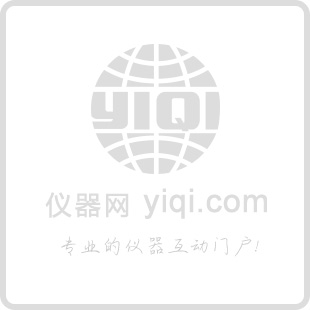本公司经销HRG-alpha/Neuregulin 1,神经调节蛋白1抗体,克隆类型为polyclonal,宿主来源是Rabbit,HRG-alpha/Neuregulin 1神经调节蛋白1抗体可应用于WB、elisa、IP、IF、IHC等实验,欢迎垂询订购!
本公司经销HRG-alpha/Neuregulin 1,神经调节蛋白1抗体,克隆类型为polyclonal,宿主来源是Rabbit,HRG-alpha/Neuregulin 1神经调节蛋白1抗体可应用于WB、elisa、IP、IF、IHC等实验,欢迎垂询订购!
货号:BY-1814R
英文名称:Anti-HRG-alpha/Neuregulin 1
中文名称:神经调节蛋白1抗体
其他名称:名HRG-alpha; Heregulin-alpha; NRG1 type III; HRG-alpha;Heregulin-alpha; NRG1; NRG 1; NRG-1;GGF; HGL; HRGA; NDF; SMDF; Pro-neuregulin-1, membrane-bound isoform; Neuregulin-1; Neu differentiation factor; Heregulin; HRG; Breast cancer cell differentiation factor p45; Acetylcholine receptor-inducing activity; ARIA; Sensory and motor neuron-derived factor; Glial growth factor; neuregulin 1 isoform HRG-alpha.
抗体来源:Rabbit
克隆类型:polyclonal
蛋白分子量:predicted molecular weight: 68kDa
纯化方法:affinity purified by Protein A
交叉反应:hu, mo, rat, dog, chk, hrs, Gpig, Rb, Danio rerio
产品介绍:Direct ligand for ERBB3 and ERBB4 tyrosine kinase receptors. Concomitantly recruits ERBB1 and ERBB2 coreceptors, resulting in ligand-stimulated tyrosine phosphorylation and activation of the ERBB receptors. The multiple isoforms perform diverse functions such as inducing growth and differentiation of epithelial, glial, neuronal, and skeletal muscle cells; inducing expression of acetylcholine receptor in synaptic vesicles during the formation of the neuromuscular junction; stimulating lobuloalveolar budding and milk production in the mammary gland and inducing differentiation of mammary tumor cells; stimulating Schwann cell proliferation; implication in the development of the myocardium such as trabeculation of the developing heart. Isoform 10 may play a role in motor and sensory neuron development. Function : Direct ligand for ERBB3 and ERBB4 tyrosine kinase receptors. Concomitantly recruits ERBB1 and ERBB2 coreceptors, resulting in ligand-stimulated tyrosine phosphorylation and activation of the ERBB receptors. The multiple isoforms perform diverse functions such as inducing growth and differentiation of epithelial, glial, neuronal, and skeletal muscle cells; inducing expression of acetylcholine receptor in synaptic vesicles during the formation of the neuromuscular junction; stimulating lobuloalveolar budding and milk production in the mammary gland and inducing differentiation of mammary tumor cells; stimulating Schwann cell proliferation; implication in the development of the myocardium such as trabeculation of the developing heart. Isoform 10 may play a role in motor and sensory neuron development.Subunit : The cytoplasmic domain interacts with the LIM domain region of LIMK1. Interacts with ERBB3 and ERBB4.Subcellular Location : Pro-neuregulin-1, membrane-bound isoform: Cell membrane; Single-pass type I membrane protein. Note=Does not seem to be active. Neuregulin-1: Secreted. Isoform 8: Nucleus. Note=May be nuclear. Isoform 9: Secreted. Note=Has a signal peptide. Isoform 10: Membrane; Single-pass type I membrane protein. Note=May possess an internal uncleaved signal sequence.Tissue Specificity : Type I isoforms are the predominant forms expressed in the endocardium. Isoform alpha is expressed in breast, ovary, testis, prostate, heart, skeletal muscle, lung, placenta liver, kidney, salivary gland, small intestine and brain, but not in uterus, stomach, pancreas, and spleen. Isoform 3 is the predominant form in mesenchymal cells and in non-neuronal organs, whereas isoform 6 is the major neuronal form. Isoform 8 is expressed in spinal cord and brain. Isoform 9 is the major form in skeletal muscle cells; in the nervous system it is expressed in spinal cord and brain. Also detected in adult heart, placenta, lung, liver, kidney, and pancreas. Isoform 10 is expressed in nervous system: spinal cord motor neurons, dorsal root ganglion neurons, and brain. Predominant isoform expressed in sensory and motor neurons. Not detected in adult heart, placenta, lung, liver, skeletal muscle, kidney, and pancreas. Not expressed in fetal lung, liver and kidney. Type IV isoforms are brain-specific.Post-translational modifications : Proteolytic cleavage close to the plasma membrane on the external face leads to the release of the soluble growth factor form.N- and O-glycosylated. Extensive glycosylation precedes the proteolytic cleavage.DISEASE : Note=A chromosomal aberration involving NRG1 produces gamma-heregulin. Translocation t(8;11) with ODZ4. The translocation fuses the 5'-end of ODZ4 to NRG1 (isoform 8). The product of this translocation was first thought to be an alternatively spliced isoform. Gamma-heregulin is a soluble activating ligand for the ERBB2-ERBB3 receptor complex and acts as an autocrine growth factor in a specific breast cancer cell line (MDA-MB-175). Not detected in breast carcinoma samples, including ductal, lobular, medullary, and mucinous histological types, neither in other breast cancer cell lines.Similarity : Belongs to the neuregulin family.Contains 1 EGF-like domain. Contains 1 Ig-like C2-type (immunoglobulin-like) domain.Heregulin-α是细胞间信号蛋白,在乳腺上皮细胞形态发生、导管形成,以及诱导乳腺上皮细胞分化成分泌腺泡中起到重要作用,对乳腺发育和乳腺功能调控具有重要意义。
 Anti-HRG-alpha/Neuregulin 1神经调节蛋白1抗体
Anti-HRG-alpha/Neuregulin 1神经调节蛋白1抗体
 Anti-HRG-alpha/Neuregulin 1神经调节蛋白1抗体
Anti-HRG-alpha/Neuregulin 1神经调节蛋白1抗体
 β-YZ蛋白2抗体/β休止蛋白2/β-arrestin / β-YZ蛋白2抗体/β休止蛋白2/β-arrestin抗体
β-YZ蛋白2抗体/β休止蛋白2/β-arrestin / β-YZ蛋白2抗体/β休止蛋白2/β-arrestin抗体
 载脂蛋白A1结合蛋白抗体 / 载脂蛋白A1结合蛋白抗体抗体
载脂蛋白A1结合蛋白抗体 / 载脂蛋白A1结合蛋白抗体抗体
 β-YZ蛋白2抗体/β休止蛋白2/β-arrestin / β-YZ蛋白2抗体/β休止蛋白2/β-arrestin抗体
β-YZ蛋白2抗体/β休止蛋白2/β-arrestin / β-YZ蛋白2抗体/β休止蛋白2/β-arrestin抗体
 α-连环蛋白抗体(钙粘蛋白相关蛋白)Catenin / α-连环蛋白抗体(钙粘蛋白相关蛋白)Catenin α
α-连环蛋白抗体(钙粘蛋白相关蛋白)Catenin / α-连环蛋白抗体(钙粘蛋白相关蛋白)Catenin α
 人脂蛋白相关磷脂酶A2抗体 人脂蛋白相关磷脂酶A2单抗 人脂蛋白相关磷脂酶A2单克隆抗体 Lp-PLA2抗体 Human lipoprotein-associated phospholipase A2 antibody
人脂蛋白相关磷脂酶A2抗体 人脂蛋白相关磷脂酶A2单抗 人脂蛋白相关磷脂酶A2单克隆抗体 Lp-PLA2抗体 Human lipoprotein-associated phospholipase A2 antibody
 血红蛋白人类抗体 血红蛋白人类单抗 血红蛋白人类单克隆抗体 HbA10抗体 Hemoglobin human HbA10 antibody
血红蛋白人类抗体 血红蛋白人类单抗 血红蛋白人类单克隆抗体 HbA10抗体 Hemoglobin human HbA10 antibody
 甲胎蛋白抗体 甲胎蛋白单抗 甲胎蛋白单克隆抗体 AFP抗体 A fetoprotein antibody
甲胎蛋白抗体 甲胎蛋白单抗 甲胎蛋白单克隆抗体 AFP抗体 A fetoprotein antibody
 血小板膜糖蛋白ⅡbⅢa抗体,交叉蛋白2抗体,小肠型脂肪酸结合蛋白抗体
血小板膜糖蛋白ⅡbⅢa抗体,交叉蛋白2抗体,小肠型脂肪酸结合蛋白抗体
 乙酰乳酸合成酶蛋白抗体,减数分裂诱导蛋白IME1抗体,膜内蛋白酶4抗体
乙酰乳酸合成酶蛋白抗体,减数分裂诱导蛋白IME1抗体,膜内蛋白酶4抗体
 结合珠蛋白相关蛋白抗体,转化蛋白p21抗体(原癌基因H-ras抗体)
结合珠蛋白相关蛋白抗体,转化蛋白p21抗体(原癌基因H-ras抗体)